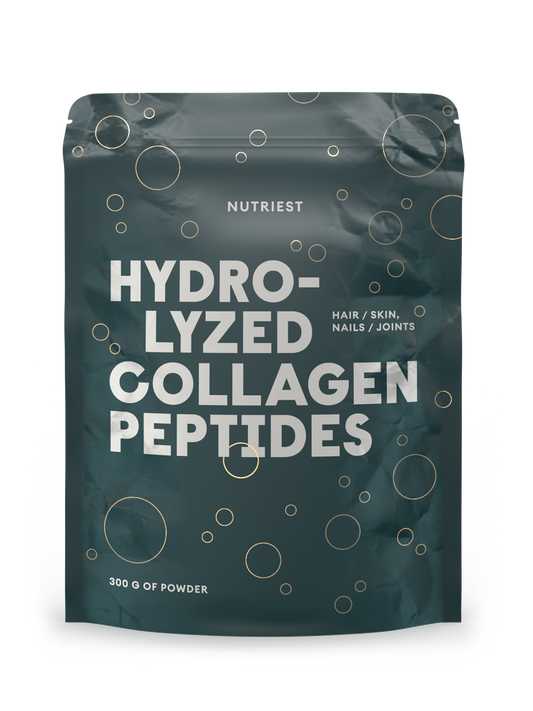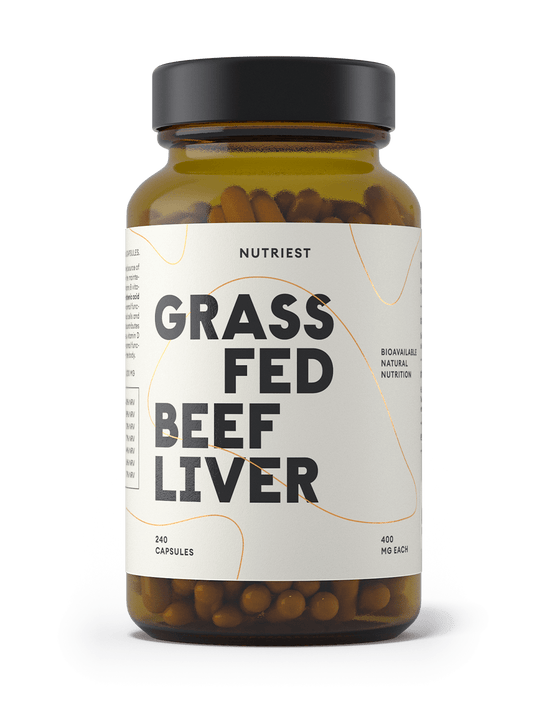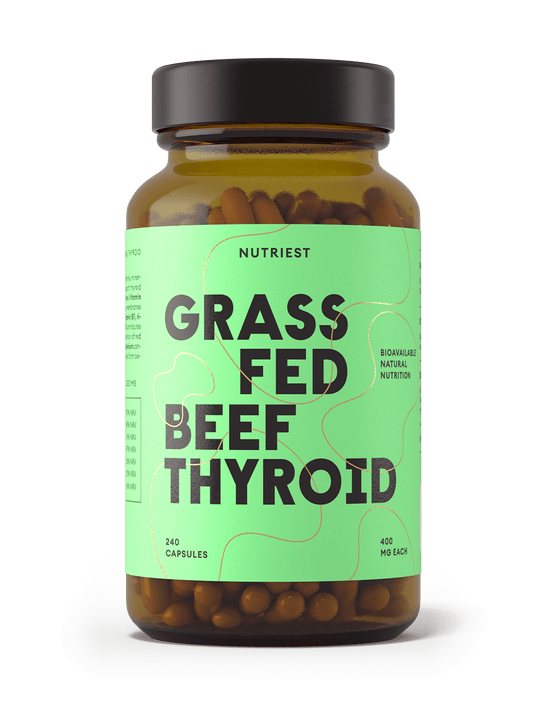Cellular energy production is the invisible engine of your health. Without sufficient energy at the cellular level, neither regeneration nor hormonal balance nor mental clarity can function optimally. This is precisely where Ray Peat comes in – with a perspective that differs significantly from traditional textbook opinions. While many experts advocate fats as the primary fuel, Peat emphasizes the central role of sugar, thyroid, light, and mitochondrial function.
The thesis of this article: If you understand how your cells produce energy—and how you can specifically support this process—you lay the foundation for greater vitality, stress resistance, and lasting health. In this article, I'll show you how to get your energy sources flowing again with the help of Ray Peat's insights.
Understanding Cellular Energy Production: The Foundation for Your Vitality
Your cells are tiny powerhouses – and their most important function is cellular energy production . In the mitochondria, the so-called "energy powerhouses" of the cell, ATP is produced from glucose and oxygen – the universal energy unit that drives all bodily functions. Ray Peat makes it clear in his work: Stable energy production is not only crucial for your performance, but also for your emotional balance, your hormone regulation, and even your immune system.
Contrary to many modern nutrition and health doctrines, Peat emphasizes that sugar—not fat—is the preferred fuel for your cells . Glucose enters the cell quickly and can be used efficiently for energy, whereas a fat-heavy metabolism, according to Peat, can be associated with increased stress levels and reduced cellular performance.
Another aspect is the so-called milieu intérieur —the internal cellular environment, which is strongly influenced by temperature, pH, and oxygen availability. When this environment becomes unbalanced, mitochondrial efficiency decreases, and the cell switches to emergency mode. This can lead to fatigue, chronic inflammation, or hormonal imbalances.
According to Peat, maintaining an energy-rich internal environment is not an accident, but the result of conscious lifestyle habits: proper nutrition, adequate light, avoiding chronic stress, and good thyroid function. By learning to specifically influence these factors, you can naturally increase your cellular energy—and thus lay the foundation for true health.
Interior environment: Optimize your inner balance
The term "milieu intérieur ," coined by the French physiologist Claude Bernard, describes the stable internal environment every cell needs to survive and function optimally. Ray Peat uses this term to emphasize that health depends on the body's ability to maintain this balance—especially with regard to temperature, pH, oxygen supply, and nutrient availability.
A key example: The ideal body temperature for enzymatic processes and mitochondrial function is around 37°C . Even a chronic drop to an average of 36°C or lower , as observed in many people with hypothyroidism, can measurably reduce cellular energy production. Studies show that a body temperature drop of just 1°C can reduce the activity of many metabolic enzymes by up to 50%. .
The pH value also plays a crucial role: Cells function optimally at a slightly alkaline pH of around 7.35–7.45 . A permanently acidic environment—caused by chronic stress, an unbalanced diet, or excessive lactic acid production—can block enzyme activity and lead to hyperacidity. According to a meta-analysis published in the Journal of Nutrition and Metabolism, up to 40% of adults in Western countries are latently "metabolically hyperacid"—with consequences for energy balance, muscle strength, and bone health. .
Ray Peat also emphasizes the importance of oxygen: Reduced oxygen availability in the cells—e.g., due to poor circulation or oxidative stress—forces the body into inefficient energy production (glycolysis instead of respiration). This shift can lead to exhaustion and degeneration in the long term. A well-perfused, oxygen-rich tissue is therefore essential for a healthy cellular environment .
What you can do:
-
Keep your body warm: Wear warm clothes, eat enough carbohydrates, avoid prolonged fasting.
-
Breathe consciously and deeply: more oxygen means more energy.
-
Avoid overacidification: Prefer alkaline-forming foods such as fruit, potatoes and milk.
-
Strengthen your thyroid: It regulates temperature, metabolism and energy balance – central elements of the internal environment.
According to Ray Peat, a well-regulated interior environment is no small feat – it is the silent foundation for your ability to generate energy, ward off stress, and stay healthy.
Nutrition and tissue renewal: Using energy for regeneration
One of Ray Peat's core themes is how nutrition directly influences cellular energy production and tissue renewal . His perspective differs significantly from conventional dietary recommendations – and thus raises common questions: "Is sugar really healthy? Should I prefer animal products? And how does all this relate to recovery?"
What really nourishes your cells?
Ray Peat emphasizes that fructose- and glucose-containing carbohydrates , such as ripe fruit, honey, milk, and potatoes, are ideal energy sources. These not only provide readily available energy but also promote a moderate release of insulin , which in turn supports cellular nutrient uptake and tissue regeneration .
In contrast, Peat warns against an excess of polyunsaturated fatty acids (PUFAs) , such as those found in many vegetable oils (sunflower, rapeseed, soy). According to his research, these fats promote oxidative processes and damage mitochondria. A 2010 study published in the American Journal of Clinical Nutrition confirms that high PUFA consumption is associated with an increased risk of cell damage and chronic inflammation.
Frequently asked questions and concerns
“Isn’t sugar bad for me?”
Not per se. Ray Peat distinguishes between industrial fructose (e.g., corn syrup) and natural sugar from fruits and honey. The latter supplies the liver with glycogen, which is crucial for stable blood sugar and hormone regulation. According to Peat, chronically low blood sugar can lead to the release of stress hormones like cortisol, which inhibits recovery.
“What exactly does a regeneration-promoting diet look like?”
According to Peat, a diet that supports tissue renewal through nutrition should include the following components:
-
Freshly squeezed fruit juices (e.g. orange juice)
-
Dairy products (rich in calcium, sugar and protein)
-
Gelatin or bone broth (to support connective tissue)
-
Potatoes and roots (easily digestible starch)
-
Coconut oil or butter as healthy fats
“How quickly can I feel effects?”
Many people report increased energy, improved skin texture, and emotional stability after just a few weeks. However, cellular regeneration doesn't happen overnight—it's the result of a consistently energy-boosting lifestyle.
Hormone balance: How progesterone protects your heart and your energy
Did you know that your hormone balance has a decisive influence on your cellular energy production ? The hormone progesterone, in particular, plays a central role. Ray Peat describes progesterone not only as a "fertility hormone," but also as a cell-protective, anti-inflammatory, and heart-strengthening molecule .
Progesterone and the cardiovascular system
According to Peat, progesterone acts like a protective shield for the heart: It reduces sensitivity to stress hormones like adrenaline, dilates blood vessels, and stabilizes the heart rhythm. Studies show that women with stable progesterone levels have a lower risk of cardiovascular disease —especially during the pre- and postmenopausal phase. .
Progesterone also directly supports mitochondrial function . It improves glucose utilization in cells and acts as an antioxidant—both crucial for maintaining high energy levels. A deficiency, however, can lead to symptoms such as low energy, irritability, weight gain, and sleep problems.
How you can naturally support your progesterone levels
-
Make sure you get enough calories from fructose and glucose-containing sources to keep stress hormones low.
-
Avoid chronic fasting or extreme diets that can suppress ovulation.
-
Support your liver function, as progesterone is broken down and regulated here.
-
Eat foods rich in magnesium – magnesium promotes progesterone synthesis.
If you optimize your progesterone effect in the cardiovascular system , you not only strengthen your hormonal balance, but also your ability to use energy efficiently and sustainably.
Collagen metabolism and structure: The underestimated energy component
When you think of energy production, mitochondria or hormones probably come to mind first. But collagen metabolism also has a significant impact on your energy status—an aspect that Ray Peat repeatedly emphasizes.
Structure saves energy
Collagen makes up about 30% of the total protein in the human body and forms the framework for skin, bones, tendons, and blood vessels. According to Peat, a stable tissue structure saves energy because fewer repair and defense mechanisms are needed. Conversely, a weakened collagen structure means a constantly increased demand for energy and nutrients—a constant stress for your body.
Disturbed collagen metabolism can manifest itself in the form of wrinkles, joint pain, weak connective tissue, or delayed wound healing. Diet and hormone levels also play a major role here.
How to improve your collagen metabolism
-
Incorporate gelatin, bone broth, or collagen hydrolysate into your diet – these provide glycine, proline, and hydroxyproline, the building blocks of collagen.
-
Avoid PUFAs as they promote collagen breakdown and inflammation.
-
Make sure you get enough vitamin C – it is essential for collagen synthesis.
-
Support the thyroid, as its hormones control protein synthesis and tissue building.
A stable collagen metabolism not only strengthens your physical structure but also creates the conditions for more efficient energy utilization at the cellular level. This is exactly what Ray Peat means when he says, "Structure is energy."
Conclusion: Activate your energy – with knowledge, nutrition and clarity
Cellular energy production isn't an abstract concept from a biology textbook—it's the foundation of your health, your mood, and your quality of life. Ray Peat's holistic approach demonstrates how closely nutrition, hormone balance, oxygen supply, and structure are intertwined. If you understand how to nourish and protect your cells, you can specifically guide your body out of energy deficiencies.
Here are the most important points at a glance:
-
Sugar is not an enemy – but a key fuel for your mitochondria.
-
A stable interior environment ensures optimal conditions in every cell.
-
Your diet directly influences your regeneration and cell health .
-
Progesterone protects the heart, energy balance and hormone balance .
-
Collagen metabolism is an often underestimated key to structural and energetic stability.
What can you do now?
Start small: Focus on warm meals, natural carbohydrates, and avoid inflammatory vegetable oils. Listen to your body's signals – fatigue, cold, or lack of motivation are all signs of disrupted energy production. If you take targeted countermeasures, your body will thank you.
➡️ Want to delve deeper into Ray Peat's world and learn how to tailor your diet and lifestyle to your individual needs? Then subscribe to our newsletter and stay inspired, informed, and energized.
Because true health begins where your cells can breathe again.





